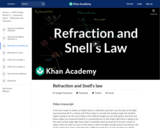
An introduction to Refraction and Snell's Law. Created by Sal Khan.
- Subject:
- Physical Science
- Physics
- Material Type:
- Lesson
- Provider:
- Khan Academy
- Provider Set:
- Khan Academy
- Author:
- Sal Khan
- Date Added:
- 12/08/2010

An introduction to Refraction and Snell's Law. Created by Sal Khan.
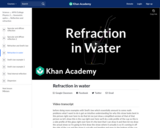
An introduction to Refraction in Water. Created by Sal Khan.

Part One of this video lesson will explore the science that explains soap bubbles, as well as the application of this knowledge to other areas, such as architecture and biology. We first introduce the concept of surface tension. In Part Two of this video lesson, students will learn where the colors of soap bubbles come from and also learn what soap bubbles and telescopes have in common. The students will first make a connection between light and waves waves and will then go on to explore various characteristics of waves through a series of classroom activities.

Students apply everything they have learned about light properties and laser technologies to designing, constructing and presenting laser-based security systems that protect the school's mummified troll. In the associated activity, students "test their mettle" by constructing their security system using a PVC pipe frame, lasers and mirrors. In the lesson, students "go public" by creating informational presentations that explain their systems, and serve as embedded assessment, testing each student's understanding of light properties.

This course explores photography as a disciplined way of seeing or investigating urban landscapes, and expressing ideas. Readings, observations, and photographs form the basis of discussions on light, detail, place, poetics, narrative, and how photography can inform design and planning.
The current version of the class website for the course can be found here: Sensing Place: Photography as Inquiry.
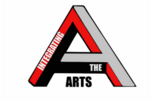
This resource was created by, Brenda Sebade, in collaboration with Dawn DeTurk, Hannah Blomstedt, and Julie Albrecht, as part of ESU2's Integrating the Arts project. This project is a four year initiative focused on integrating arts into the core curriculum through teacher education and making art materials available to participating schools.

This article, written for students in grades 4-5, introduces the concept of albedo and describes the shrinking of Arctic sea ice. Modified versions are available for students in younger grades.
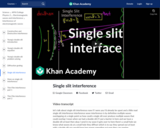
What happens when there's only one hole? Created by David SantoPietro.

This course explores photography as a disciplined way of seeing, of investigating landscapes and expressing ideas. Readings, observations, and photographs form the basis of discussions on landscape, light, significant detail, place, poetics, narrative, and how photography can inform design and planning, among other issues.
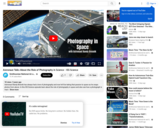
In this ISS Science episode learn about the role of photography in space and also see how a photograph is made.
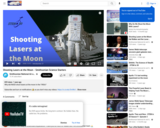
Why did NASA shoot lasers at the moon in the 1960s?

Manipulate light by building pinhole cameras, and by investigating the effects that lenses and prisms have on light.
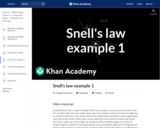
Snell's Law Example 1. Created by Sal Khan.
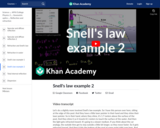
Snell's Law Example 2. Created by Sal Khan.

In this video from DragonflyTV, follow the investigation of Isaac and Anjali as they record, measure, and analyze data about how the Sun's position in the sky affects a solar-powered car's speed.
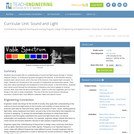
Students are provided with an understanding of sound and light waves through a "sunken treasure" theme a continuous storyline throughout the lessons. In the first five lessons, students learn about sound, and in the rest of the lessons, they explore light concepts. To begin, students are introduced to the concepts of longitudinal and transverse waves. Then they learn about wavelength and amplitude in transverse waves. In the third lesson, students learn about sound through the introduction of frequency and how it applies to musical sounds. Next, they learn all about echolocation what it is and how engineers use it to "see" things in the dark or deep underwater. The last of the five sound lessons introduces acoustics; students learn how different materials reflect and absorb sound.
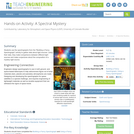
Students use the spectrographs from the "Building a Fancy Spectrograph" activity to gather data about light sources. Using their data, they make comparisons between different light sources and make conjectures about the composition of a mystery light source.
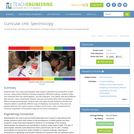
Students learn how using spectrographs helps people understand the composition of light sources. Using simple materials including holographic diffraction gratings, students create and customize their own spectrographs just like engineers. They gather data about different light sources, make comparisons between sources and theorize about their compositions. Before building spectrographs, students learn and apply several methods to identify and interpret patterns, specifically different ways of displaying visual spectra. They also use spectral data from the Cassini mission to Saturn and its moon, Titan, to determine the chemical composition of the planet's rings and its moon's atmosphere.
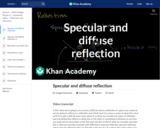
An introduction to Specular and Diffuse Reflection. Created by Sal Khan.
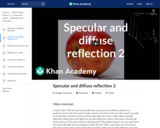
An introduction to Specular and Diffuse Reflection, part 2. Created by Sal Khan.